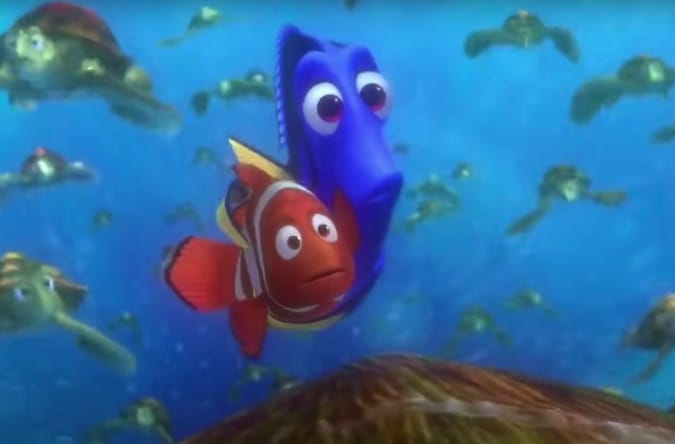
Haley Bartels is a Los Angeles-based screenwriter and a 2021 Academy Nicholl Fellow. Her first feature, an independent indie horror film with the working title The Great God Pan, is slated to shoot in 2023 with Nightshade Pictures; her Nicholl script Pumping Black is in development. In this piece, she talks about one of her favorite parts of any screenplay: The midpoint reversal. No idea what that is? Read on…
The midpoint! He’s a slippery little bugger. Ask ten screenwriters and you’ll get at least as many different answers about what, precisely, the midpoint is — and what it signifies. “The point of no return” is a common one. “A major plot point” is a real sound-and-fury-signifying-nothing answer – what does that mean? How is that helpful? What?
Also Read: Want to Win an Academy Nicholl Fellowship? Listen to Haley Bartels and the Other 2021 Winners
There is a staggering abundance of people (especially screenwriters, especially on Twitter) who will loudly shout at you, “This is the thing your midpoint needs!!! This is what it HAS to do!”

Haley Bartels
I… am not here to tell you anything like that. I’m going to tell you how I have learned to think about the midpoint, with the caveat that you can get away with anything — if it’s good. Parasite has a fantastic midpoint – that has verrrry little to do with anything I’m about to say. So, you know, grain of salt. Consider the gospel of William Goldman – “Nobody knows anything.”
That said, here is exactly what your midpoint needs to accomplish and if it doesn’t you’re completely and totally fucked.
Okay, so – I’m talking about a very specific kind of movie here. I’m speaking to a more-or-less traditionally structured character-arc film, where a protagonist’s want leads them on a journey that forces them to confront their flaw and, thus, learn the lesson that helps them overcome said flaw – basic want vs. need structure.
(If you’re trying to write, like, a Jodorowsky movie – I salute you, I applaud you, I will be useless to you.)
So, let’s look at an example. It is not a particularly groundbreaking or offbeat or new example, but – Finding Nemo. Good god, FINDING NEMO. Have you ever gotten drunk at a party and screamed at your friends for an hour about why the beats of Finding Nemo are structurally perfect? No? Me, neither.
Before we take a look at the midpoint and understand why this one is such a strong example, we have to understand Marlin’s arc. Over the course of the film, Marlin has to move from a place of fear to a place of trust. Throughout Act 2, Marlin’s want – finding his son – is forcing him to overcome his fear and learn the lesson required to achieve his need – learning to let go, and trust that his kid will be okay.
What makes the midpoint of Nemo such a chef’s kiss of perfection is that it’s not just a plot point or an obstacle – it’s inextricable from that arc. It’s where want and need collide. In the first half of the movie, Marlin is operating from a place of fear (Augh! Sharks! Run away! Augh! Creepy deep sea fish! Run away!). In the second half – he’s learning how to trust (See: the “Belly of the Whale” moment, where he blindly trusts Dory and lets go of the whale tongue, entering the literal belly of the beast despite not knowing whether or not the whale wants to eat them).
So, then, what does that make the midpoint? It’s the place where those two ideologies – fear and trust – smash into each other. For me, a great midpoint is one where the protagonist first starts to understand how their flaw has held them back from living their best life, and get a glimpse of what their life might be like were they to leave that flaw behind.
In Nemo, the midpoint comes after Marlin has made a crucial error not to trust Dory, our childlike Nemo proxy, in going through the deep spooky trench. And his refusal to trust directly leads to Dory getting hurt: She’s stung by jellyfish.
But what’s great about Nemo is that it’s not only that Marlin begins to see the cost of the flaw – he also gets a glimpse of a potential new way of living. He and Dory are rescued by the sea turtle Crush and his son Squirt – who embody a very healthy, trusting, father-son relationship. We see this visually: When Squirt gets bumped out of the East Australian Current, Marlin’s instinct is to panic – but Crush is calm and only says, “Let us see what Squirt does flying solo,” totally unbothered. And, sure enough: not only is Squirt fine, he seems to have had fun. And Marlin begins to understand that his overbearing nature might be costing Nemo the precious fun of being a child.
Now, your character can’t start embodying this lesson in action – not fully, not yet. We still have half the movie to go. But rather than scrounging for some shocking, absolutely bananas plot twist, I always find the most effective midpoint reversals to not so much be about a reversal in the plot – though that’s great to have in there, too, if you can swing it – but a shift in the way your character thinks. If you can hit that emotional beat, you’re in a really good spot.
But, look, if none of this was helpful – go talk to those other nine screenwriters. One of us will have something for ya.
Main image: Finding Nemo, very near the midpoint.
Share:

